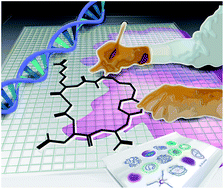Much attention has been directed toward improving nonviral gene delivery in order to replace viral vectors and overcome the barriers to clinical gene therapy. Specifically targeting nonviral gene delivery vehicles to the disease tissue can significantly improve their delivery efficiency. Targeting peptides have been developed for growth factor receptors, integrins and tumor vasculature to target cancer, neurotrophin or neurotoxin receptors aiming to give specificity for neurodegenerative disease, airway epithelial cells to target cystic fibrosis and other tissue specific cells and receptors in bone tissue, cornea and dendritic cells. These highly specific, high-affinity peptides were identified using phage display or through rational design, and were evaluated within this review for their potential and ability to improve transfection, highlighting the successful applications of this technology and discussing the features of the design that contribute to this success. It was found that effective peptide targeting of gene delivery relied both on peptide ligand performance and on nonviral vectors that exploit the appropriate intracellular trafficking mechanisms.

You have access to this article
 Please wait while we load your content...
Something went wrong. Try again?
Please wait while we load your content...
Something went wrong. Try again?


 Please wait while we load your content...
Please wait while we load your content...